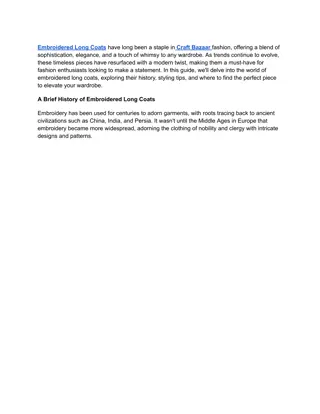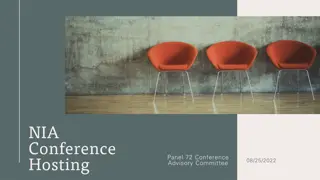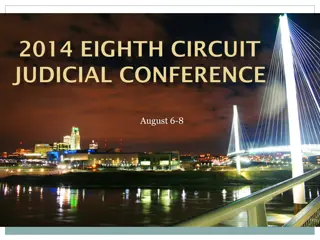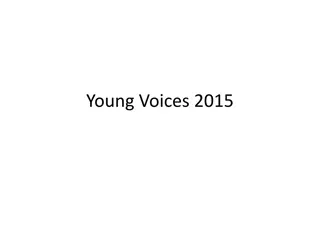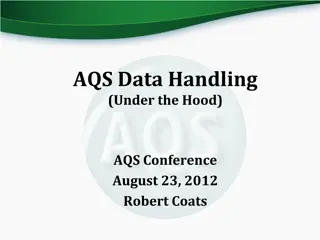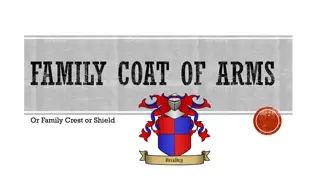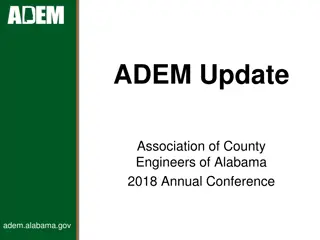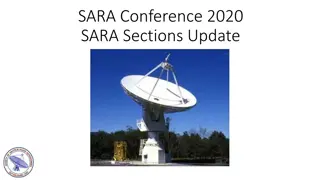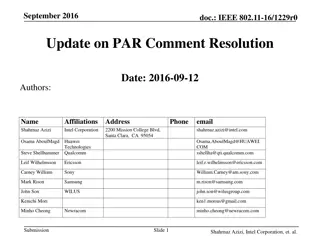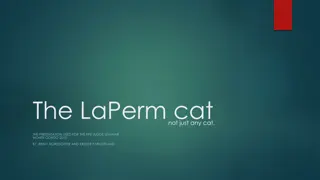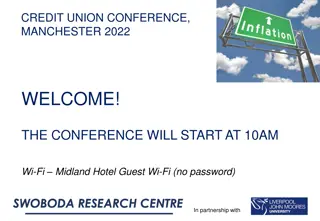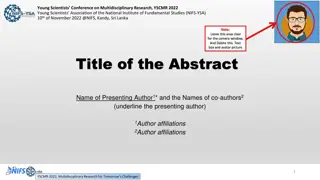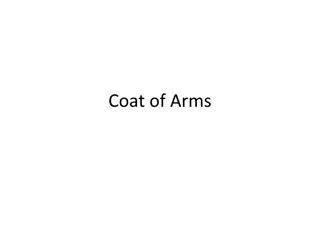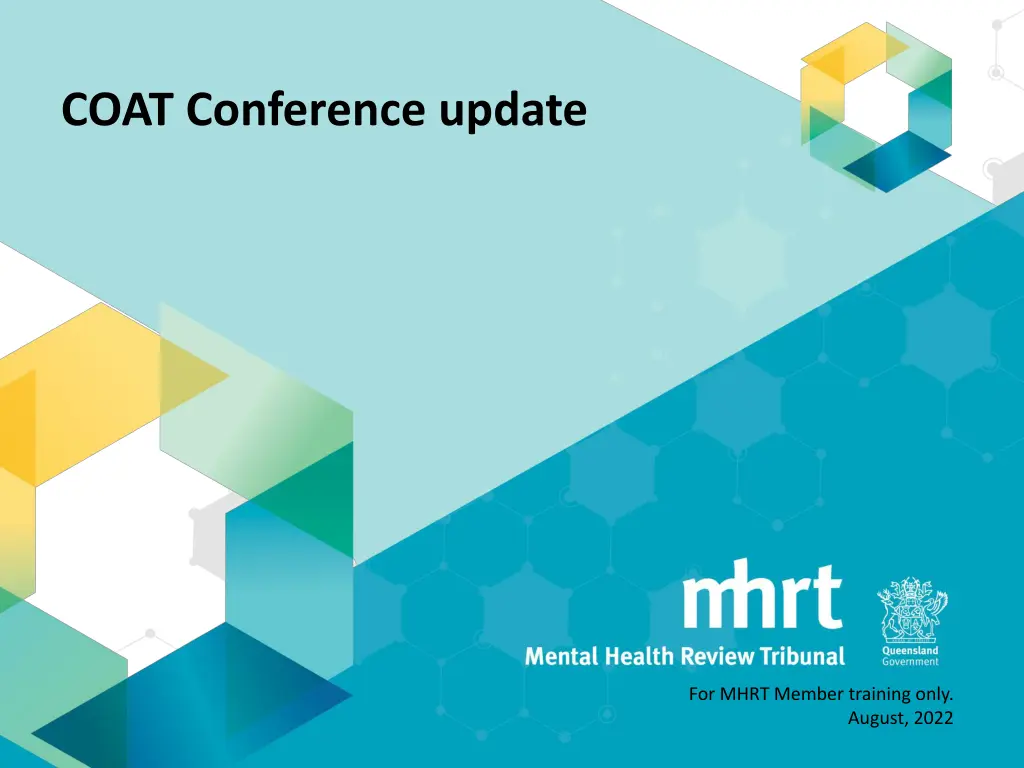
Enhancing Legitimacy and Trust in Legal Systems Through Procedural Justice
Explore the importance of procedural justice in legal systems to enhance legitimacy and trust among participants. Learn how factors like trust, confidence, and compliance impact the effectiveness of legal processes and community cooperation.
Uploaded on | 3 Views
Download Presentation

Please find below an Image/Link to download the presentation.
The content on the website is provided AS IS for your information and personal use only. It may not be sold, licensed, or shared on other websites without obtaining consent from the author. If you encounter any issues during the download, it is possible that the publisher has removed the file from their server.
You are allowed to download the files provided on this website for personal or commercial use, subject to the condition that they are used lawfully. All files are the property of their respective owners.
The content on the website is provided AS IS for your information and personal use only. It may not be sold, licensed, or shared on other websites without obtaining consent from the author.
E N D
Presentation Transcript
COAT Conference update For MHRT Member training only. August, 2022
Agenda A number of MHRT attended the COAT Conference. They will each give us an overview of a topic presented at the Conference that is relevant to the MHRT. Dr Kim Forrester - Procedural Justice: Why process matters. Nikki Wawryk Working effectively with high conflict people. Kelvin Defranciscis Fast and slow thinking in time poor Tribunals. 2
Procedural Justice: Why process matters Presenter: Dr Kim Forrester COAT Presentation: Prof. Tom Tyler, Professor of Psychology, Yale University
Presentation: Procedural Justice Why process matters (presentation by Professor Tom Tyler Yale University) Goals: Primary goal - substantive justice Secondary goals - parties to the dispute believe, and experience, the procedure as just and a fair way to reach an appropriate decision. Want parties to abide by decision and know that the perception of fairness promotes acceptance and compliance. In addition Want people involved to view the system as legitimate: to abide by decisions, bring matters to the legal system and support the legal system. At community level want courts, tribunals viewed as legitimate because want them to trust the system. 4
Goals of legitimacy and trust in the system If people think system is a just way to address issues they are more likely to participate, not seek private vengeance, more likely to abide and less likely to undermine. US decline in level of confidence and trust in the courts: 2018 73% to 2021 63%. Why was this? Looked at factors such as too costly, slow, judges don t follow the law make decisions based on own prejudice. When looking at legitimacy TRUST is a distinctive issue: independent from questions of substantive law, performance and cost. Legitimacy matters and needs to be measured: 1. Trust and confidence (in legal authority and courts); 2. Perceived obligation to obey decisions; 3. Normative alignment 5
When measured legitimacy did it matter? Behaviour of people in community - Factors measured : 1. Bring problem forward: highest if thought legitimate then lawful then effective (performance); 2. Willingness to support system, and; 3. Comply What mattered was the court system was perceived as legitimate whether there was trust in the courts. Behaviour ( cooperation and compliance with the law) is driven by legitimacy and this is separate from perceptions of lawful and effective/performance. 6
Why are people dissatisfied and discontent with the Court and Tribunal Systems? Research -What shapes people s views? Looked at the tribunal experience and how people felt about the experience: ?win, ?got what they thought they deserved, how case was handled-felt the process was fair as distinct from what the outcome was. Findings: Procedural justice: people strongly impacted by their views about the process, how their matter was handled regardless of outcome. Short term acceptance and long term adherence shaped by process judgement distinct from judgement about outcome. Procedural justice impacts trust in authority of the system 7
Procedural Justice - Works, so should be concerned with it because builds trust and confidence in the system. Not issues like cost, substantive nature of decision that determine confidence in legal system. - What counts is that system made a decision in a fair way. - Procedural fairness matters because it drives legitimacy. Looked at acceptance of decisions found procedural fairness was a higher factor than outcome fairness or outcome favourability. - Applies to individual and community perceptions of system legitimacy. - Legitimacy increased with perceptions of procedural fairness. - More willing to comply if perceived as fair procedure. 8
What is Procedural Justice (fairness)? 4 issues/ principles that define: Quality of decisions: Allowing a voice before decision Neutrality Quality of Treatment Respectful Trustworthiness Research findings: these 4 factors matter more than winning or loosing. Applies at the individual and community level. Whether trust courts mattered more than substantive justice, timely, cost 9
Principles Voice: Want an opportunity to tell their story. State their case. Complained when did not feel given opportunity or decision maker distracted and not listening. Allowed to speak and feel heard. Neutrality: Principled decision, independent, based on facts and apply the rules consistently. Problem is being SEEN to be fair explain the process, procedure, decision before and after. In layman s terms. Respect : participants entitled to respect. Their case/concerns life taken seriously by decision maker. Polite, respectful explain ie right to appeal. Trust: Most important issue is whether decision maker is sincere and benevolent with good intention. Trying to find the right outcome: how you communicate : active listening, connection, empathy, call by name, eye contact, make clear you are listening. People respond to sincere effort to take their needs and their point of view seriously. 10
Bench card for trial judges Procedural fairness Introduce yourself Greet the parties neutrally Address timing concerns Explain extraneous factors Explain procedure Use plain language Make eye contact Ask open ended questions Stay on task Personalise scripted language 11
Conclusion Procedural Justice is an additional element to consider in relation to the design of, and conducting of, proceedings. Need a system approach. Realigned to the principles underpinning perceptions of legitimacy. Helps secure immediate goal of acceptance of decisions and the larger issue of community support for compliance with the law and cooperation with the system . Builds commitment and promotes productive relationships between parties through a sense of reassurance and expectation of justice. There is a different way to think about the goals of the system that is evidence based. Focus on legitimacy and build it through procedures that are experienced by the people as being a fair way to manage conflict and enforce rules . 12
Working effectively with high conflict people Presenter: Nikki Wawryk COAT Presentation: Megan Hunter, CEO & Co-founder High Conflict Institute
Topics What is the High Conflict Institute? What is excluded from today s summary What is a high conflict situation? What is a high conflict personality? Tips on how to handle high conflict situations and people Practical example/s Relevance to Tribunal practice 14
What is the High Conflict Institute Based in San Diego, USA Provides education and training to assist in mediation and conflict resolution Commenced in 2006 to assist courts to deal with high conflict cases, mostly in relation to family law disputes Attempts to apply the field of psychology to legal situations Aims to provide simple strategies that anyone can learn More information: www.highconflictinstitute.com 15
Topics not covered today: Personality disorders Brain science Childhood attachment theory These factors are considered by the HCI to contribute towards the development of a high conflict personality 16
What is a high conflict situation? Spectrum of conflict situations low to high and each are mirror opposites More than a loud argument Typically involves a high conflict person/personality 17
What is a high conflict personality Someone who feels victimised Quick to blame others for their situation Nil insight Unable to control themselves A drive to win and be right Not a diagnosis 4 key characteristics: 1. All-or-nothing thinking 2. Unmanaged emotions 3. Extreme behaviours 4. Instant blamers 18
How to handle these situations Be prepared private working theory Decrease stress / freezing and feel confident in dealing with high conflict situations Understanding person is being driven by their personality, they are not bad people, they have no insight into their behaviour Driven by fear and desire to feel safe 19
Assertive approach is best Cf passive or aggressive Passive conflict avoidance, can embolden aggression Aggressive will escalate conflict Assertiveness: Diverts and contains conflict Makes the person feel safe Development of trust Don t react, stay calm Matter-of-fact approach Emotionally unhooked This is a learned skill 20
What to avoid Trying to give someone insight Focusing on the past Emotional confrontations or asking about emotions Telling person they have a high conflict personality 21
Hearing Structure Explain how hearing will run at the start Set out that each person will have a turn to speak You will have a turn to tell me what outcome you want and your reasons Please do not interrupt each other (I want to fully concentrate) Focus is on what to do now, not the past Any questions? Goal to push the person from an emotional state towards problem solving / thinking 22
CARS Method 1. Connecting with EAR (empathy, attention, respect 2. Analysing choices and proposals 3. Responding to misinformation 4. Setting limits on misbehaviour Article: https://www.highconflictinstitute.com/hci-articles/de- escalating-high-conflict-situations-in-4-steps 23
Practical Examples Family law mediation example used by HCI MHRT examples 24
Why is it so important to handle high conflict situations well? Procedural fairness Instil confidence in judicial systems / administration of justice Future engagement in proceedings Maintain therapeutic relationship between participants, support people Hope for change in the future / empowerment 25
Fast and Slow Thinking in Time Poor Tribunals Presenter: Kelvin Defranciscis COAT Presentation: Justice Peter Applegarth AM Judge, Supreme Court Queensland
Fast and slow thinking Intuitive thinking /system 1: going with one's first instinct and reaching decisions quickly based on automatic cognitive processes. Cognitive thinking / system 2: allocates attention to the effortful, mental activities that demand it, including complex computations. Involves the questioning of first instinct and consideration of other possibilities. When all is said and done, we must face the fact that judges are human Jerome Frank, 1949. 27
Example Dr Donald Redelmeier, MD, MSHSR, FRCPC, FACP Emergency room at hospital patient brought in with multiple serious and obvious physical injuries from a car accident Patient with a history of overactive thyroid also presenting with an arrhythmia Be careful when there is one diagnosis that instantly pops into your mind that beautifully explains everything all at once. That is when you need to stop and check your thinking 28
Cognitive Reflection test The original test penned by Dr. Frederick contained only the three following questions: A bat and a ball cost $1.10 in total. The bat costs $1.00 more than the ball. How much does the ball cost? If it takes 5 machines 5 minutes to make 5 widgets, how long would it take 100 machines to make 100 widgets? In a lake, there is a patch of lily pads. Every day, the patch doubles in size. If it takes 48 days for the patch to cover the entire lake, how long would it take for the patch to cover half of the lake? 29
Cognitive shortcuts Cognitive shortcuts: the automatic thought patterns that people use to make decision- making more efficient. The availability heuristic: in which people judge likelihood by how easily examples spring to mind The anchoring heuristic: in which people stick with initial impressions. Framing effects: in which people make different decisions depending on how information is presented Blind obedience: in which people stop thinking when confronted with authority Hindsight bias: tendency, upon learning an outcome of an event - to overestimate one's ability to have foreseen the outcome The law of small numbers (random numbers): drawing on information that can easily be called to mind. Yet experience may be unrepresentative of the reality. 30
Interrupt the intuitive thinking Professor Emma Cunliffe: for the account that I find more coherent to have occurred, what must the protagonist have done? When and how must she have done it? In what time period did it occur, according to the best and most independent evidence I can muster? How well is this account grounded in the trial record, and to what extent am I making inferences from proven facts? What evidence challenges this account, and do I disbelieve that evidence? Are there things I would expect to see if this narrative were true, but which are absent from or contradicted by the record? And, what assumptions am I making about human behaviour to get to this result? 31
Stop and Think Be aware of those cognitive shortcuts Use cheat sheets or prompts to help structure and make a decision Imagine if you had someone writing a dissenting opinion e.g. devil s advocate Take a break or reserve the decision 32


